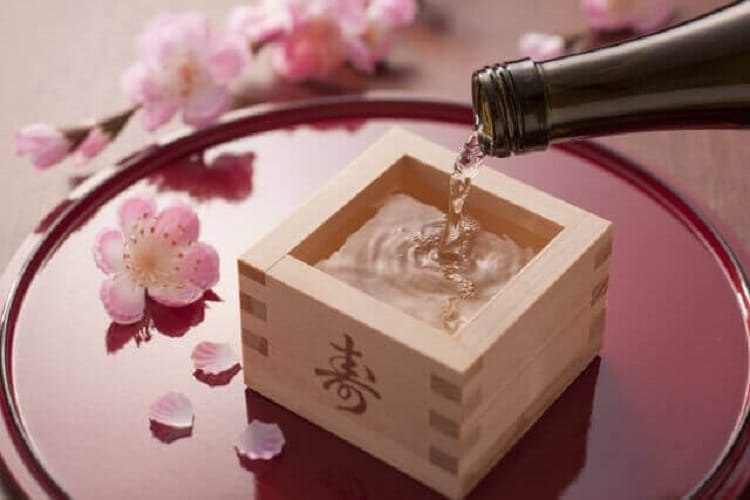
Once the moromi is finished, the next step is "upper tank".
What is “upper tank”?
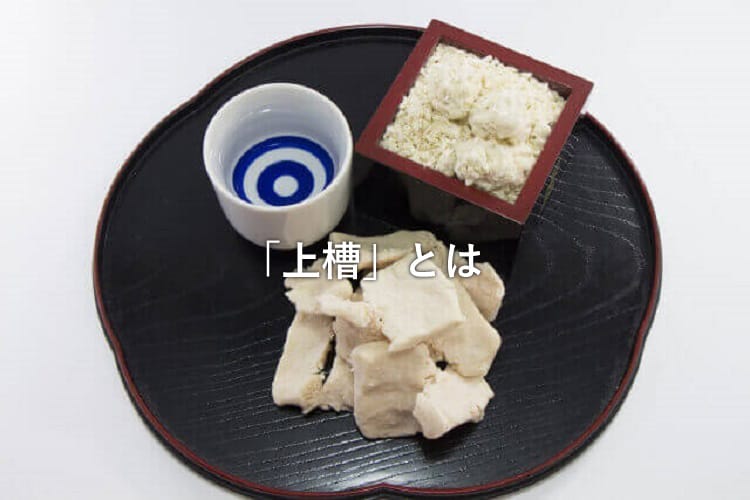
The upper tank is the work of squeezing the liquid part from the mash that has been finished after alcoholic fermentation.Say. The squeezed liquid becomes the original liquor, and the remaining solids become the liquor.
The final stage of moromi is cloudy. As it is, it is not legally recognized as sake. Sake is called “Sake” in the Sake Tax Act.
In fact, you must meet several conditions in order to give yourself sake.
The conditions are
① Be sure to use rice and rice bran
② Be sure to filter
③ The alcohol content is less than 22
Sake is born for the first time after clearing these three points.
The process called “top tank” described here is necessary to satisfy the condition of “filtering” in ②.is. There seems to be a lot of sake breweries called “squeezing” the upper tank.
Ascertaining the timing of the upper tank depends on Mr. Tsuji's arm

It ’s important to decide when to do this tank.Mr. Tatsumi who is responsible for manufacturing.Because it is a very important process that has a great influence on the quality of sake..
In order to confirm the state of moromi that changes from day to day, Mr. Tsuji conducts a daily inspection of alcohol quality along with a visual check.
Sake quality tests measure sake and amino acid levels. The purpose of this measurement is to confirm the progress of alcohol fermentation.
Amino acid content is a barometer that knows how healthy yeast is.. A high amino acid value indicates that the yeast is weak.
Mr. Tsuji is required to have the skill to determine the best timing of the upper tank to finish the desired sake quality while visually checking the amino acid content, sake content, and foam state.. That ’s exactly how Mr. Tatsumi ’s arm is shown.
General method of upper tank
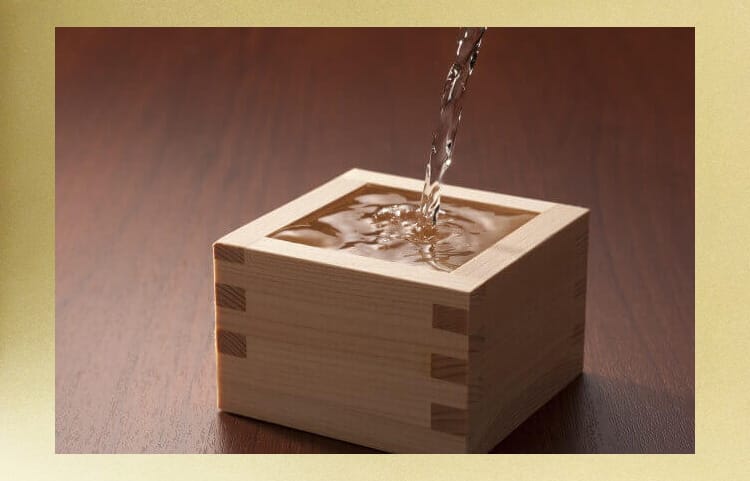
I mentioned earlier that the timing of the upper tank is important, but it is also very important to select the upper tank method. This is because the taste of sake changes depending on the method of the upper tank.
There are various ways to use the upper tank. Here are three typical types.
① Squeezing with automatic press
The most common method used in breweries throughout the country is to use an automatic press.
このThe automatic press often uses a machine called “Yabuta”, which is a multi-layered board covered with cloth.is. It will be easy to understand if you imagine something like a huge accordion curtain.
I have been to various breweries so far, and almost every brewery has a Yabuta. By the way, the reason why the automatic press machine is called Yabuta is that many of them are manufactured by a manufacturer called Kamata Sangyo.
As for how to use Yabuta, first mash is injected from the top. ItWhen air pressure is applied from the side, the plate is pushed and alcohol is squeezed out from what is called the front tank mouth.It is a mechanism.
A great advantage is that it can efficiently squeeze a large amount of liquor and prevent oxidation because it takes less time.It has been with.
By the way, in recent years, not only winter but also sake breweries that make sake throughout the year are increasing. And due to the effects of global warming, temperatures in autumn and spring tend to rise.
When it gets warmer, the scare is the increase in mold and germs. Especially for long-term Yabuta, it tends to become a hotbed of mold, so it is necessary to create a cold condition as in midwinter.
for that reason,Store the pigs in the refrigerator at 0 ℃ ~ 3 ℃, and keep them at the same temperature as mid winter in autumn or spring.Many sake breweries have been devised.
② Squeezing in a tank
The most traditional old-fashioned tank method is to use this tank. A tank is a wooden container in the shape of a boat.
here,Sake bags filled with 3 liters of moromi are arranged side by side, stacked side by side, initially with their own weight, and then gently squeezed from above with pressure..
When using a tank, the pressure is not as strong as that of Yabuta,Suitable for squeezing delicate sake like Daiginjo.
However, you cannot squeeze a large amount of liquor as fast as Yabuta. In addition, skill of craftsman is necessary to pile up sake bags.
And it takes longer to squeeze than a pig, so care must be taken not to oxidize the liquor.
③ Bag hanging
How to hang a sake bag filled with moromi in a tank of about 20 to 30 bag and collect the portion of the “drop” that is dripped by natural gravity without applying pressure..
It takes a lot of time and effort,The method used for the top tanks of the highest grades, such as those that are mainly exhibited at appraisals and limited Daiginjo sake.
This very delicate way of squeezingExtract only necessary componentsAnd no unnecessary miscellaneous tastes come out in liquor.
Both fragrance and taste can fully express the original potential,You can finish with a clear and delicate taste with transparency. By the way, it seems that moromi that remains in the sake bag without being squeezed can be squeezed using another method.
By the way, this upper tank method may be called by various names other than “bag hanging”.
First,"Squeezing bag". It's because you squeeze in a sake bag. And"Sake". It is called because it collects dripping dredges.
In addition, "Dove bottle enclosure" and "Dove bottle removal"Also called. A bottle is a bottle that contains 18 liters, or 10 bottles. It is called this because it uses this dough bottle as a container for the sake that comes out of the tank.
In addition, many breweries call it “hanging the neck”. This came to be called because the neck of the sake bag was tied and hung with a strap. It's a little scary, but maybe this is the easiest way to imagine it.
in this way,Despite the same upper tank method, various names are used depending on where the focus is placed.. I'm a little confused when I'm not used to it.
If you go to a liquor store and look at the label, you will see variations of the various names introduced here, so if you are going to a store that sells high-class sake, please check it out. .
What is the difference between “Nigori Sake” and “Doburoku”?
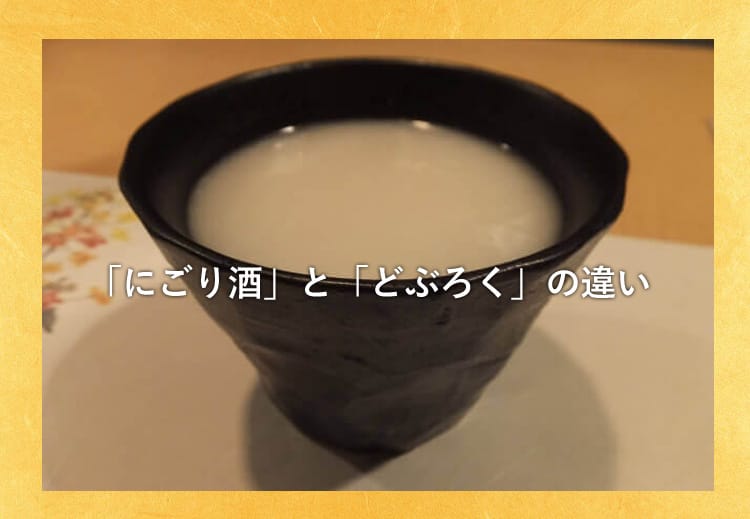
In recent years, “Nigori Sake” has been gaining attention. It's a sake that has a lot of visuals and a touch like Amazake, a bit like yogurt. The reason why there are a lot of solid parts is because they are squeezed with a cloth with a coarse mesh.
By the way, do you know the difference between “Nigori Sake” and “Doburoku”? There seem to be many people confusing this 2, but in fact it is not similar.
“Nigori Sake” is treated as Japanese sake (sake) under the Sake Tax Law, but “Dobukuro” is treated as “other brewed sake” or “turbid sake”, not Japanese sake (sake)..
The reason is,Because Doburoku does not perform the upper tank at all. Therefore, it is classified in this way as not satisfying the condition of “filtering” necessary to be recognized as Japanese sake (sake).
The history of “Nigori Sake” is surprisingly short, and was first made in Japan in 1964 (Showa 39).The birthplace of Tokubei Masuda (Kyoto City, Kyoto Prefecture)It is said that.
It seems that it was a trial-and-error process to determine what tools to use in the upper tank in order to clear the mashing process.
The final approach was to put a bamboo basket of mesh 2 mm into the tank and take out the moromi. We received a certificate from the National Tax Agency and succeeded in commercializing it safely.
The nets made from bamboo baskets are now made of metal, but they are still made in the same way even now, more than 50 years after their birth.
There are other unique ways of squeezing
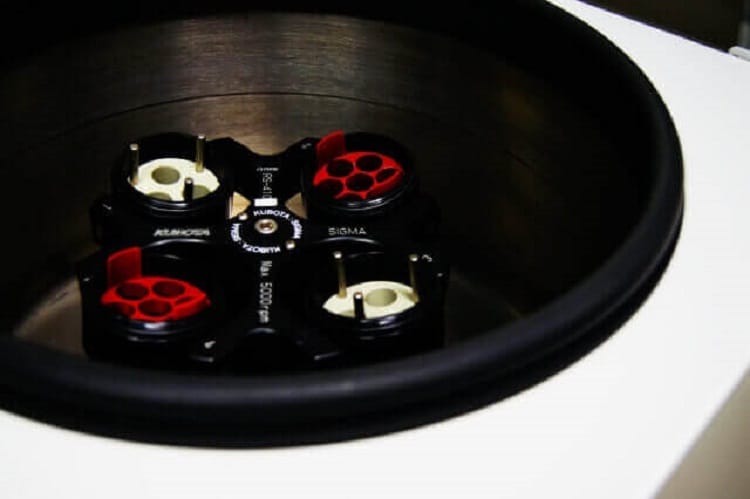
-Squeezing "centrifugal separator" using the latest technology-
It may not be easy to say "centrifuge", but as an image, it may be easy to understand if it is associated with dehydration of the washing machine.A machine that separates liquor and sake lees by squeezing with a centrifugal force of about 3,600 rotation per minute.
Only one company in the world manufactures centrifuges for Moromi's upper tank. that isKokusan Co., Ltd. (Taito-ku, Tokyo).
Co-developed at the request of Akita Prefectural Food Research Center and Brewing Experiment Station, and obtained a patent in 2005 (Heisei 17). The official product name is“Ginjo Moromi Upper Tank System”.
Currently, there are 35 types of "H-132G1H (S)" for 60 liters and "H-132I1H (S)" for 2 liters. The breweries that have been introduced are about 10 in the whole country. By the way, the price is tens of millions of yen.
With a centrifuge,Since it is squeezed not by pressure but by centrifugal force, it does not put stress on the mash and prevents deterioration and oxidation. Because it is made of stainless steel, it does not have the original smell of liquor bags.
Also, the time required for the upper tank is short, and it is squeezed in a sealed space.It is possible to leave Ginjo incense without skippingIt becomes. Therefore, it is said to be the most ideal way of squeezing that can be considered now.
However, while there are various advantages like this, there are many disadvantages. First of allPrice height.
Because it costs 10 million yen, it will be difficult to get out of hand, especially in small-scale sake breweries. If introduced, the initial cost will be reflected in the price of liquor, so the product price will inevitably be high.
In addition, Less squeezed at a timeThere is also a difficult point. Furthermore, because the sake lees become paste,It takes time to maintain the machineThe point is also mentioned.
Because of these circumstances, even though it is known as the ultimate machine for squeezing high-quality liquor, it seems that the number of breweries that are going to be introduced has not yet increased.
This centrifugeAsahi Shuzo (Iwakuni City, Yamaguchi Prefecture) was first introduced on a commercial basis in Japan.is. It's a very famous brewery familiar with the “Samurai Festival” brand. They are well known to foreigners because they are actively expanding overseas such as France and the United States.
In addition, while few breweries have introduced centrifuges nationwide, a number of breweries have been actively introduced in Niigata Prefecture, which is the area of sake.
The earliest in Niigata Prefecture,Chiyo no Hikari Shuzo (Myoko City, Niigata Prefecture).“Chiyo no Hikari Junmai Ginjo Kenichiro”Seems to be able to contain dust particles by reducing the centrifuge rotation speed to about half the 1,800 rotation for 1 minute.Elegant fruit fragrance and creamy taste reminiscent of spring light snowIs gaining popularity.
By the way, this “KENICHIRO” is a new brand that was born in 2015 and is known as the “K” series. Mr. Kenichi Ikeda, managing director of the next brewery, will be in charge. When you put your name on the brand, you feel a strong enthusiasm.
Kitayuki Sake Brewery (Sado City, Niigata Prefecture) has also released a variety of sakes squeezed using a centrifuge."Hokusetsu Daiginjo Centrifugal Separation"The umami of moromi is extracted as it is, and the fresh fragrance and delicate taste unique to Daiginjo are excellent.
~ "Peeling tree squeeze" (Hanegi Shibori)
In contrast to centrifuges that make use of state-of-the-art technology, there are traditional and unique upper tank methods that some breweries continue to stick to. It is a technique called “plucking wood”.
Sake breweries that use this repellent tree squeeze, such as Yoshidaya (Minamishimabara City, Nagasaki Prefecture) and Shiraito Sake Brewery (Itoshima City, Fukuoka Prefecture), are now only a few left.
What is repellent tree squeezing?Upper tank technique by squeezing lever principle.A huge tree of about 8 meters is hung from the ceiling, and the weight is used to apply subtle pressure using this principle to squeeze it slowly and carefully..
Specifically, the sake bag is first filled with moromi and placed in a tank. Cover from above and squeeze under pressure using a repellent tree. After that, it is a way to put 500 kilos to 1 ton of heavy stones and squeeze them carefully.
Cannot be squeezed out by machine,Finished with a very mellow liquor with a unique plumpnessThe charm of this repellent tree squeezing. It must be said that it is a "soul drop" that has come to fruition with a lot of effort and deep love.
Yoshidaya homepage (http://www.bansho.info/hanegi/index.html) Provides a video showing how plucked trees are being squeezed. Please check it out if you want to know more or want to see it.
How to call at the stage of the upper tank
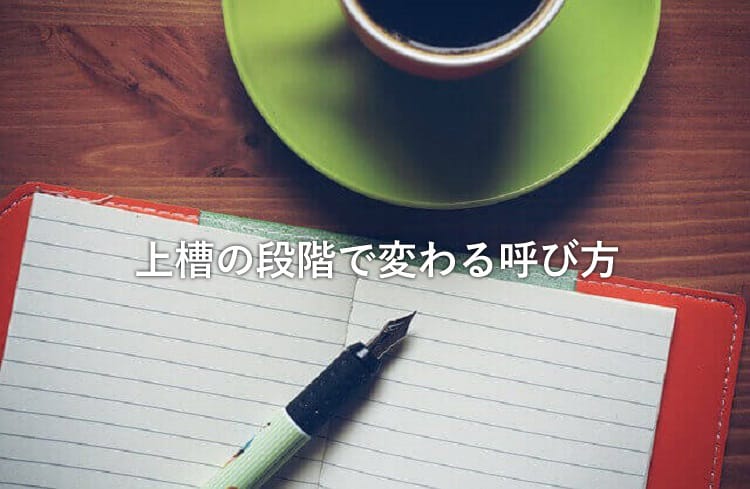
The name of sake squeezed using a tank or bag hanging method changes depending on the stage in the upper tank. There is also a difference in taste despite being squeezed from the same tank.
Here, we will explain them in the order they appear.
① Roughness
The part that comes out before applying pressure at the beginning of squeezingIs called “Rakubashiri”. The name comes from"Roughness".
It is thin and has a slightly lower alcohol content.Wild and fresh taste and gorgeous scent.
② Nakadori
After the launchWhen pressure is applied little by little, a transparent liquid gradually comes out. This transparent part is called “room arrangement”.
Excellent balance of flavor, the best partIt has been with. In appraisals, there are many cases where only this part is taken out and exhibited.
It is also called "Nakagumi" (Nakagumi) or "Nakadori" (Nakadare). If you want to focus on a beautiful taste, this “chatting” is recommended.
③ blame
When the arrangement is finished, we will squeeze with pressure next. The portion of liquor that comes out in this way is called “blame”. This part seems not to be used much in high-class sake such as Daiginjo.
Compared to "Rakubashiri" and "Introduction"There are many miscellaneous tastes, but you can enjoy a rich and powerful taste.. It also contains the highest alcohol content of 3.
Due to its individuality, there are a lot of deep and core fans. There are also sake breweries that make sake that blends only the blame of mania.
Representative examples include “Blamed Blend / Backless Unfiltered Raw Sake” from Iinuma Meijo (Tochigi City, Tochigi Prefecture) and “Remnant Blame Blended Unfiltered Raw sake Junmai Ginjo” from Miyoshi Kiku Shuzo (Miyoshi City, Tokushima Prefecture). It's rare to see so much, so if you find it, I think it will be fun,
By the way,Most Japanese sake is a mix of "spotting", "spotting" and "blaming". In addition, since there is no strict rule, it seems that the extent to which it is called “blank” varies slightly depending on the brewery.
About the sake lees
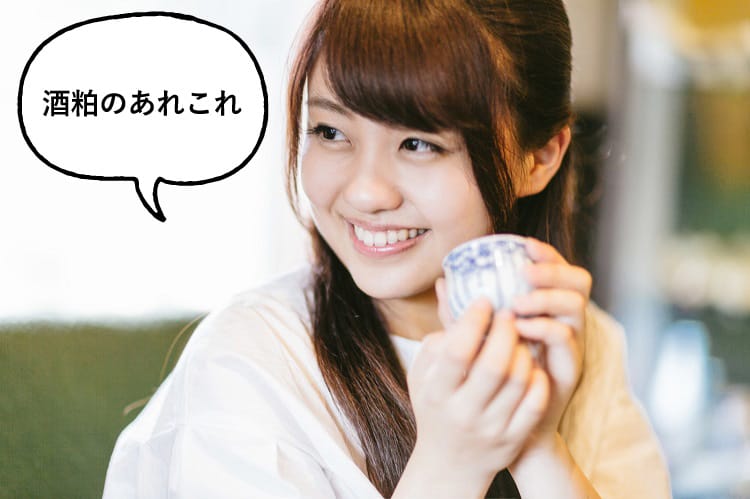
What remains after the upper tankSake leesis. Due to its abundant nutrients and the expectation of a beauty effect, the “sake leap boom” has also occurred in recent years, particularly among women.
There are many ways to use it, such as adding sake lees to a dish or making a sake lees pack. In addition, if you dissolve sake lees in hot water and add sweetness, you can easily make amazake, also called drip drip.
Even if it is called sake lees, there are actually many types depending on the shape and manufacturing method. Here are some typical examples.
① Board
A square plate-shaped liquor that is often sold in supermarkets is called “Itabuchi”. The most common thing.
If you use an automatic press in the upper tank, the sake lees will remain in a plate shape, but this is peeled off with a spatula and cut into a product.is. Since it is hard as it is, it is used by softening with water.
② Rose
Ginjo sake squeezed or spilled from an automatic pressA collection of sake lees that were too soft to form a plate.
Although the quality is the same as that of Itabuchi,Softer and easier to melt than boardIs the feature.
③ Kneaded rice cake
Kneaded sake lees and processed into a soft pasteIs called "Neruri-an".
Easier to melt than rosewoodTherefore, it is often used for cooking such as pickling vegetables and fish.
④ Depression
Sake lees matured for about half a yearIs called a “step-in”. The name was given because I stepped in the boots and pulled out the air.
Depending on the region, the name may be changed to “step-in”, “household” or “push”.
It is brown or golden and has a strong sweetness and richnessis. It is often used for pickles such as Nara pickles. If you see a brown liquor sold as “for pickles” at a supermarket, it is a step-in bowl.
Sake lees are sold all year round,The best season is when new sake begins to circulateis. The sake lees that circulate between 1 and 4 are fresh and nutritious.
You can buy sake lees at supermarkets and liquor stores, but it's even better if you buy them directly from the brewery. It is recommended because you can get something fresh.
